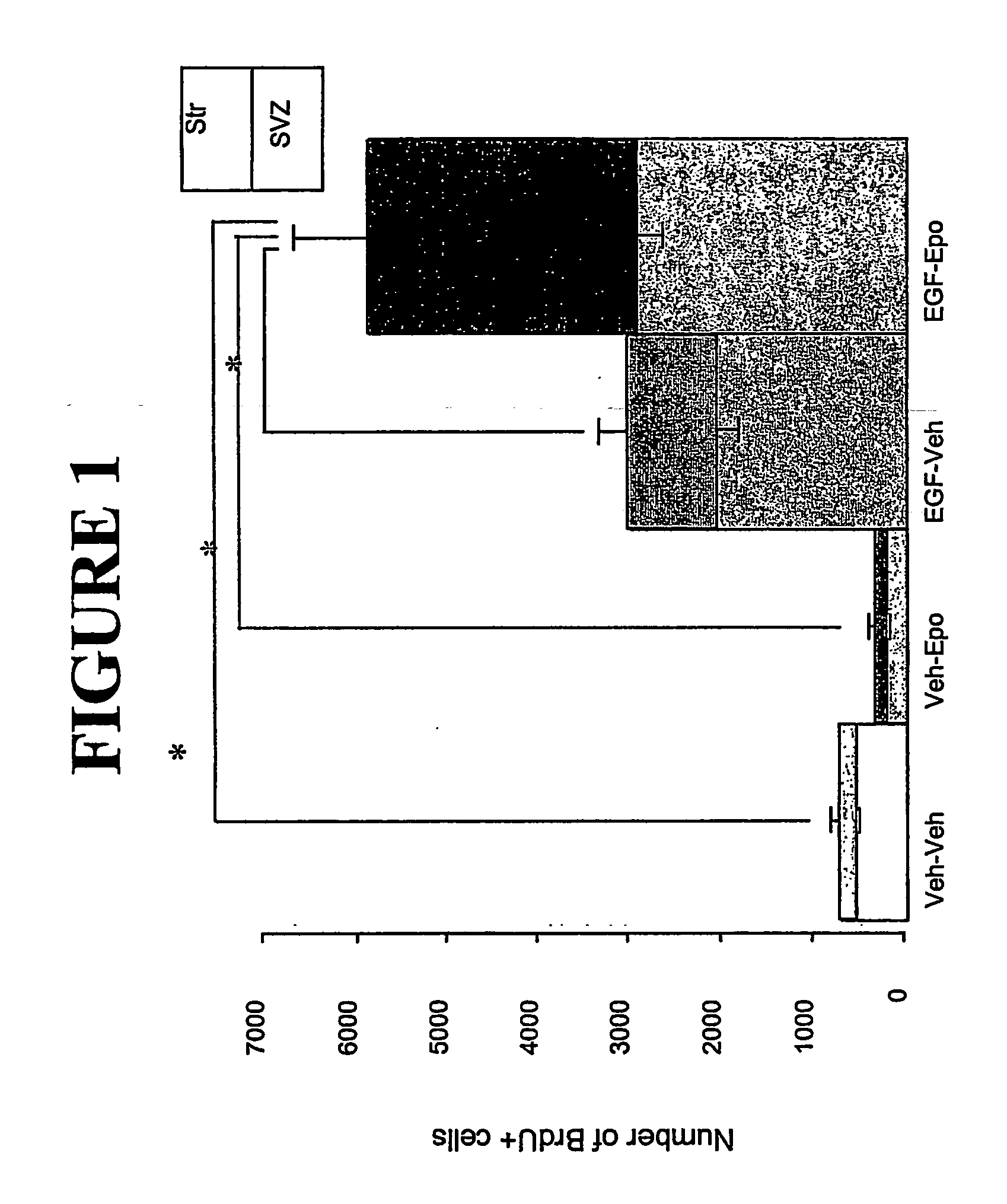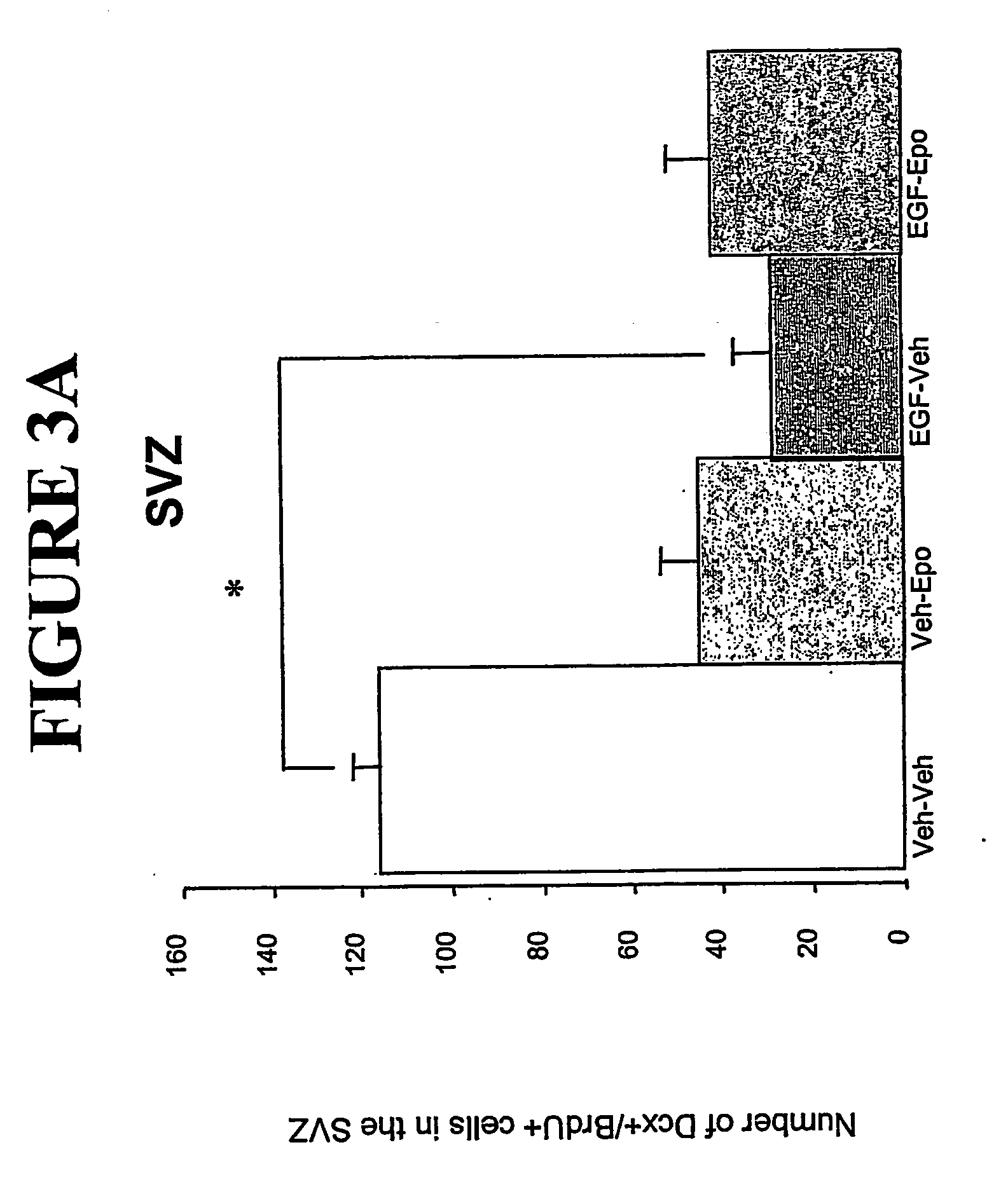Method of enhancing and/or inducing neuronal migration using erythropoietin
a technology of erythropoietin and erythropoietin, which is applied in the direction of growth factors/regulators, animal/human proteins, hormone peptides, etc., can solve the problems of loss of neurons, inability of these cells or the brain region to carry out the intended function, and limited capacity of the mature nervous system to produce new neurons, etc., to enhance or induce migration, and induce expression of erythropoi
- Summary
- Abstract
- Description
- Claims
- Application Information
AI Technical Summary
Problems solved by technology
Method used
Image
Examples
examples
[0094] An in vivo mouse model of neurodegenerative disease and the use of Epo and EGF to induce neuronal migration.
[0095] EGF has been shown to induce proliferation of neural stem cells in the subventricular zone (SVZ). Previously, it was demonstrated that after a unilateral striatal lesion, newly-generated cells from both hemispheres migrated towards the damaged area in response to EGF. Epo is able to direct neural stem cells to differentiate into neuronal precursors. (Shingo et al., 2001). A mouse model of neurodegenerative disease was used to determine the effects of EGF and Epo on neural stem cell migration. Following an injury to elicit neurodegeneration, mice were infused with epidermal growth factor (EGF) and erythropoietin to induce proliferation, differentiation, and migration of endogenous neural precursor cells.
[0096] Adult male CD-1 mice were given an injection of ibotenic acid (4.0 μg in 1.6 μl total volume) into the medial striatum. Within one week, many of the stria...
PUM
| Property | Measurement | Unit |
|---|---|---|
| molecular weight | aaaaa | aaaaa |
| total volume | aaaaa | aaaaa |
| flexibility | aaaaa | aaaaa |
Abstract
Description
Claims
Application Information
 Login to View More
Login to View More - R&D
- Intellectual Property
- Life Sciences
- Materials
- Tech Scout
- Unparalleled Data Quality
- Higher Quality Content
- 60% Fewer Hallucinations
Browse by: Latest US Patents, China's latest patents, Technical Efficacy Thesaurus, Application Domain, Technology Topic, Popular Technical Reports.
© 2025 PatSnap. All rights reserved.Legal|Privacy policy|Modern Slavery Act Transparency Statement|Sitemap|About US| Contact US: help@patsnap.com



